
Documentation
EP6002-0002
2-channel serial interface (RS232 / RS422 / RS485)
1.0
2019-12-11
Version:
Date:


Table of contents
EP6002-0002 3Version: 1.0
Table of contents
1 Foreword ....................................................................................................................................................5
1.1 Notes on the documentation..............................................................................................................5
1.2 Safety instructions .............................................................................................................................6
1.3 Documentation Issue Status..............................................................................................................7
2 Product overview.......................................................................................................................................8
2.1 Product group: EtherCAT Box Modules ............................................................................................8
2.2 Introduction........................................................................................................................................9
2.3 Technical data .................................................................................................................................10
2.4 Scope of supply ...............................................................................................................................11
2.5 Process image.................................................................................................................................12
2.5.1 Assignment of connectors to process data...................................................................... 13
2.5.2 Control word .................................................................................................................... 14
2.5.3 Status word...................................................................................................................... 14
2.6 Technology ......................................................................................................................................15
3 Mounting and connection.......................................................................................................................16
3.1 Mounting..........................................................................................................................................16
3.1.1 Dimensions ...................................................................................................................... 16
3.1.2 Fixing ............................................................................................................................... 17
3.2 Supply voltages ...............................................................................................................................18
3.2.1 Connectors ...................................................................................................................... 18
3.2.2 Status LEDs..................................................................................................................... 19
3.2.3 Conductor losses ............................................................................................................. 19
3.3 EtherCAT.........................................................................................................................................20
3.3.1 Connectors ...................................................................................................................... 20
3.3.2 Status LEDs..................................................................................................................... 21
3.3.3 Cables.............................................................................................................................. 21
3.4 RS232..............................................................................................................................................22
3.4.1 Connectors ...................................................................................................................... 22
3.4.2 Status LEDs..................................................................................................................... 22
3.5 RS422 / RS485................................................................................................................................23
3.5.1 Connectors ...................................................................................................................... 23
3.5.2 Status LEDs..................................................................................................................... 23
3.6 UL Requirements.............................................................................................................................24
4 Commissioning/Configuration ...............................................................................................................25
4.1 Configuration in TwinCAT................................................................................................................25
4.2 Serial interfaces...............................................................................................................................26
4.2.1 Parameterization of the interface type ............................................................................. 26
4.2.2 Setting the interface parameters...................................................................................... 30
4.2.3 Communication by PLC program..................................................................................... 31
4.2.4 Communication via a virtual COM port ............................................................................ 33
4.3 CoE objects .....................................................................................................................................34
4.3.1 Directory .......................................................................................................................... 34
4.3.2 Object description and parameterization ......................................................................... 35

Table of contents
EP6002-00024 Version: 1.0
4.4 Restoring the delivery state .............................................................................................................57
4.5 Decommissioning ............................................................................................................................58
5 Appendix ..................................................................................................................................................59
5.1 General operating conditions...........................................................................................................59
5.2 EtherCAT Box- / EtherCATPBox - Accessories ............................................................................60
5.3 General note on the introduction of the Beckhoff Identification Code (BIC) ....................................61
5.4 Support and Service ........................................................................................................................63

Foreword
EP6002-0002 5Version: 1.0
1 Foreword
1.1 Notes on the documentation
Intended audience
This description is only intended for the use of trained specialists in control and automation engineering who
are familiar with the applicable national standards.
It is essential that the documentation and the following notes and explanations are followed when installing
and commissioning these components.
It is the duty of the technical personnel to use the documentation published at the respective time of each
installation and commissioning.
The responsible staff must ensure that the application or use of the products described satisfy all the
requirements for safety, including all the relevant laws, regulations, guidelines and standards.
Disclaimer
The documentation has been prepared with care. The products described are, however, constantly under
development.
We reserve the right to revise and change the documentation at any time and without prior announcement.
No claims for the modification of products that have already been supplied may be made on the basis of the
data, diagrams and descriptions in this documentation.
Trademarks
Beckhoff
®
, TwinCAT
®
, EtherCAT
®
, EtherCATG
®
, EtherCATG10
®
, EtherCATP
®
, SafetyoverEtherCAT
®
,
TwinSAFE
®
, XFC
®
, XTS
®
and XPlanar
®
are registered trademarks of and licensed by Beckhoff Automation
GmbH. Other designations used in this publication may be trademarks whose use by third parties for their
own purposes could violate the rights of the owners.
Patent Pending
The EtherCAT Technology is covered, including but not limited to the following patent applications and
patents: EP1590927, EP1789857, EP1456722, EP2137893, DE102015105702 with corresponding
applications or registrations in various other countries.
EtherCAT
®
is registered trademark and patented technology, licensed by Beckhoff Automation GmbH,
Germany.
Copyright
© Beckhoff Automation GmbH & Co. KG, Germany.
The reproduction, distribution and utilization of this document as well as the communication of its contents to
others without express authorization are prohibited.
Offenders will be held liable for the payment of damages. All rights reserved in the event of the grant of a
patent, utility model or design.

Foreword
EP6002-00026 Version: 1.0
1.2 Safety instructions
Safety regulations
Please note the following safety instructions and explanations!
Product-specific safety instructions can be found on following pages or in the areas mounting, wiring,
commissioning etc.
Exclusion of liability
All the components are supplied in particular hardware and software configurations appropriate for the
application. Modifications to hardware or software configurations other than those described in the
documentation are not permitted, and nullify the liability of Beckhoff Automation GmbH & Co. KG.
Personnel qualification
This description is only intended for trained specialists in control, automation and drive engineering who are
familiar with the applicable national standards.
Description of instructions
In this documentation the following instructions are used.
These instructions must be read carefully and followed without fail!
DANGER
Serious risk of injury!
Failure to follow this safety instruction directly endangers the life and health of persons.
WARNING
Risk of injury!
Failure to follow this safety instruction endangers the life and health of persons.
CAUTION
Personal injuries!
Failure to follow this safety instruction can lead to injuries to persons.
NOTE
Damage to environment/equipment or data loss
Failure to follow this instruction can lead to environmental damage, equipment damage or data loss.
Tip or pointer
This symbol indicates information that contributes to better understanding.

Foreword
EP6002-0002 7Version: 1.0
1.3 Documentation Issue Status
Version Modifications
1.0 • First release, adapted from the documentation EP600x V2.1.0
Firmware and hardware versions
This documentation refers to the firmware and hardware version that was applicable at the time the
documentation was written.
The module features are continuously improved and developed further. Modules having earlier production
statuses cannot have the same properties as modules with the latest status. However, existing properties
are retained and are not changed, so that older modules can always be replaced with new ones.
The firmware and hardware version (delivery state) can be found in the batch number (D-number) printed on
the side of the EtherCAT Box.
Syntax of the batch number (D-number)
D: WW YY FF HH
WW - week of production (calendar week)
YY - year of production
FF - firmware version
HH - hardware version
Example with D no. 29 10 02 01:
29 - week of production 29
10 - year of production 2010
02 - firmware version 02
01 - hardware version 01
Beckhoff Identification Code (BIC)
The Beckhoff Identification Code contains additional information about the delivery state of the module:
General note on the introduction of the Beckhoff Identification Code (BIC) [}61].

Product overview
EP6002-00028 Version: 1.0
2 Product overview
2.1 Product group: EtherCAT Box Modules
EtherCAT Box modules are I/O modules for industrial controllers.
They comply with protection class IP67 and are intended for use outside the control cabinet in wet, dirty or
dusty industrial environments.
EtherCAT Box modules communicate with the controller via the EtherCAT fieldbus. They each have two
connections for EtherCAT communication and for the power supply:
• Feed
• Downstream connection
This enables the cabling of EtherCAT Box modules in a line structure:
Power
EtherCAT
...
...
Fig.1: EtherCAT Box modules: Example of cabling in a line structure

Product overview
EP6002-0002 9Version: 1.0
2.2 Introduction
Fig.2: EP6002-0002
EP6002-0002 | 2-channel serial interface, RS232, RS422/RS485
The EP6002 serial interface module allows the connection of devices with an RS232 or RS422/RS485
interface. The module transmits the data in a fully transparent manner to the higher-level automation device.
The data is transferred via the fieldbus using a simple handshake protocol. This does not have any effect on
the protocol of the serial interface. The active serial communication channel functions independently of the
higher-level bus system in full duplex mode at up to 115,200 baud, while a 864 byte receive buffer and a 128
byte send buffer are available.
The connector assignment depends on the interface. For each channel, RS232 or RS422/RS485 can be
selected.
In conjunction with the TwinCAT Virtual Serial COM Driver (see TwinCAT Supplements – Communication)
the EP6002 can be used as a normal Windows COM interface.

Product overview
EP6002-000210 Version: 1.0
2.3 Technical data
All values are typical values at 25°C, unless otherwise stated.
Technical data EP6002-0002
Fieldbus
Fieldbus EtherCAT
Connection 2x M8 socket, green
Electrical isolation 500V (fieldbus/ IO)
Supply voltages
Connection Feed: 1 x M8 plug, 4-pin, black
Downstream connection: 1 x M8 socket, 4-pin, black
Control voltage U
S
Nominal voltage 24V
DC
(-15%/ +20%)
Sum current max. 4A
1)
Consumers • Module electronics: 130mA
• Remote communication stations (e.g. barcode scanner)
Peripheral voltage U
P
Nominal voltage 24V
DC
(-15%/ +20%)
Sum current max. 4A
1)
Consumers -
Serial interface
Number of channels 2
Interface type Individually parameterizable for each channel:
• RS232
• RS422
• RS485
Connection 1x M12 socket per channel
Remote station supply voltage
2)
5V
DC
, isolated potential
max. 20mA
Cable length RS232: max. 15m
RS422/RS485: max. 1,000m
Data transfer rate Parameterizable:
300 .. 115,200baud (bit/s)
Data format Parameterizable:
8N1, 7E1, 7O1, 8N1, 8E1, 8O1, 7E2, 7O2, 8N2, 8E2, 8O2
Receive buffer 864bytes
Transmit buffer 128bytes
Bit distortion <3%
1)
Sum current of consumers and power transmission. This value corresponds to the
current carrying capacity of the connections for the supply voltages.
2)
Supply voltage available at the connections of the serial interface.

Product overview
EP6002-0002 11Version: 1.0
Technical data EP6002-0002
Environmental conditions
Ambient temperature
during operation
-25 .. +60°C
-25 .. +55°C according to cURus
Ambient temperature
during storage
-40.. +85°C
Vibration / shock resistance conforms to EN 60068-2-6 / EN 60068-2-27
EMC immunity / emission conforms to EN 61000-6-2 / EN 61000-6-4
Protection class IP65, IP66, IP67 conforms to EN 60529
Mechanics
Weight approx. 165g
Installation position variable
Approvals and conformity
Approvals CE, cURus
2.4 Scope of supply
Make sure that the following components are included in the scope of delivery:
• 1x EtherCAT Box EP6002-0002
• 2x protective cap for EtherCAT socket, M8, green (pre-assembled)
• 1x protective cap for supply voltage input, M8, transparent (pre-assembled)
• 1x protective cap for supply voltage output, M8, black (pre-assembled)
• 10x labels, blank (1 strip of 10)
Pre-assembled protective caps do not ensure IP67 protection
Protective caps are pre-assembled at the factory to protect connectors during transport. They may
not be tight enough to ensure IP67 protection.
Ensure that the protective caps are correctly seated to ensure IP67 protection.

Product overview
EP6002-000212 Version: 1.0
2.5 Process image
COM TxPDO-Map Inputs
The following figure shows an example of the process data object for serial channel 1. The process data
object for channel 2 is structured in exactly the same way.
Status
Status word [}14] for receive data.
Data In [n]
The input variables "Data In 0" .. "Data In 22" each
contain one byte of receive data (USINT).
"Data In 0" contains the first-received byte.

Product overview
EP6002-0002 13Version: 1.0
COM RxPDO-Map Outputs
The following figure shows an example of the process data object for serial channel 1. The process data
object for channel 2 is structured in exactly the same way.
Ctrl
Control word [}14] for transmit data.
Data Out [n]
The output variables "Data Out 0" .. "Data Out 22"
can each be filled with one byte of send data.
The content of "Data Out 0" is transmitted first.
2.5.1 Assignment of connectors to process data
Connector Chan-
nel
receive data send data
X01
X02
1
COM TxPDO-Map Inputs Channel 1 COM RxPDO-Map Outputs Channel 1
X03
X04
2
COM TxPDO-Map Inputs Channel 2 COM RxPDO-Map Outputs Channel 2

Product overview
EP6002-000214 Version: 1.0
2.5.2 Control word
Bit 15 14 13 12 11 10 9 8 7 6 5 4 3 2 1 0
Name OL7 OL6 OL5 OL4 OL3 OL2 OL1 OL0 - - - - SC IR RA TR
Bit no. Name Description
15.. 8 OL7.. OL0
(OutLength)
1
dec
.. 22
dec
Number of output bytes available for transfer from the controller to the box.
7..4 reserved
3 SC
(SendContinuous)
rise Continuous sending of data from the FIFO.
The send buffer is filled (up to 128 bytes) by the controller. The buffer content is sent
with rising edge of bit SC. Once the data has been transferred, this is acknowledged
by the box to the controller by setting the SW.2 bit. SW.2 is cancelled with CW.3.
2 IR
(InitRequest)
1
bin
The controller requests the box to initialize. The send and receive functions are
blocked, the FIFO pointers are reset, and the interface is initialized with the values of
the responsible objects (baud rate 4073, data frame 4074, feature bits 4075). The
execution of the initialization is acknowledged by the box with the SW.2 (IA) bit.
0
bin
The controller once again requests the box to prepare for serial data exchange.
1 RA
(ReceiveAccepted)
toggle The controller acknowledges receipt of data by changing the state of this bit. Only
then can new data be transferred from the box to the controller.
0 TR
(TransmitRequest)
toggle Via a change of state of this bit the controller notifies the box that the DataOut bytes
contain the number of bytes indicated via the OL bits. The box acknowledges receipt
of the data in the status byte by changing the state of the SW.0 (TA) bit. Only then
can new data be transferred from the controller to the box.
2.5.3 Status word
Bit 15 14 13 12 11 10 9 8 7 6 5 4 3 2 1 0
Name IL7 IL6 IL5 IL4 IL3 IL2 IL1 IL0 - OVERRUN
ERR
FRAMING
ERR
PARITY
ERR
BUF_F IA RR TA
Key
Bit no. Name Description
15...8 IL7... IL0
(InLength)
1
dec
.. 22
dec
Number of input bytes available for transfer from the box to the controller.
7 reserved
6 OVERRUN ERR 0 .. 1 An overrun error has occurred. The data concerned is not loaded to the receive
FIFO of the box and is lost.
5 FRAMING ERR 0 .. 1 A framing error has occurred. The data concerned is not loaded to the receive FIFO
of the box and is lost.
4 PARITY ERR 0 .. 1 A parity error has occurred. The data concerned is not loaded to the receive FIFO of
the box and is lost
3 BUF_F 1 The receive FIFO is full. All further incoming data will be lost!
2 IA
(InitAccepted bit)
1 The initialization has been executed by the box.
0 The box is ready again for serial data exchange.
1 RR
(ReceiveRequest)
toggle Via a change of state of this bit the box notifies the controller that the DataIn bytes
contain the number of bytes indicated via the IL bits. The controller has to acknowl-
edge receipt of the data in the control byte via a change of state of bit CW.1 (RA).
Only then can new data be transferred from the box to the controller.
0 TA
(TransmitAccepted)
toggle The box acknowledges the receipt of data by changing the state of this bit. Only then
can new data be transferred from the controller to the box.

Product overview
EP6002-0002 15Version: 1.0
2.6 Technology
Fig.3: Level of RS232, RS422, RS485 interfaces
Data transfer rate
The process image contains 22bytes of user data. It is possible to transmit or receive these 22bytes every
second PLC cycle at the most:
• The data is transferred from the box to the controller in the first PLC cycle.
• In the second PLC cycle, the controller must acknowledge that it has accepted the data.
Therefore, if the cycle time is 10ms, 50times 22bytes can be transmitted per second.
If the data format is set to 8N1, each transmitted byte is made up of a start bit, eight data bits and a stop bit.
This is equivalent to 10bits per byte of user data.
With the above-mentioned settings, a continuous data transfer rate of:
• 50[1/s] x 22[bytes] x 10[bits] = 11000 baud (bit/s)
can be achieved.
The next lower standard data transfer rate is 9600baud. Accordingly, continuous transfer at a maximum
baud rate of 9600 can be secured with a cycle time of 10ms.
If only low quantities of data are transmitted or received sporadically (e.g. barcode scanner), the baud rate
can also be set higher, or the cycle time can be enlarged.
If the controller cannot collect the data quickly enough from the box, the data will be stored intermediately in
the internal buffer of the box. The buffer for received data has a size of 864bytes. If this is exhausted, all
further data will be lost.
A buffer is also available for the transmit data. With a baud rate of 300 and a data format of 8N1, the box can
only transmit 30bytes per second. However, if more than these 30bytes per second are received, a
128bytes transmit buffer will be written to first in this case also. Once this is full, all further data will be lost.

Mounting and connection
EP6002-000216 Version: 1.0
3 Mounting and connection
3.1 Mounting
3.1.1 Dimensions
119
126
23
30
26.5
13.5
Ø 3.5
Fig.4: Dimensions
All dimensions are given in millimeters.
Housing features
Housing material PA6 (polyamide)
Sealing compound polyurethane
Mounting two fastening holes Ø3.5mm for M3
Metal parts brass, nickel-plated
Contacts CuZn, gold-plated
Power feed through max. 4A
Installation position variable
Protection class IP65, IP66, IP67 (conforms to EN60529) when screwed together
Dimensions (HxWxD) approx. 126 x 30 x 26.5mm (without connectors)

Mounting and connection
EP6002-0002 17Version: 1.0
3.1.2 Fixing
NOTE
Dirt during assembly
Dirty connectors can lead to malfunctions. Protection class IP67 can only be guaranteed if all cables and
connectors are connected.
• Protect the plug connectors against dirt during the assembly.
Mount the module with two M3 screws on the fastening holes in the corners of the module. The fastening
holes have no thread.

Mounting and connection
EP6002-000218 Version: 1.0
3.2 Supply voltages
The EtherCAT Box is supplied with two supply voltages. The supply voltages are electrically isolated in the
EtherCAT Box.
• Control voltage U
S
• Peripheral voltage U
P
Redirection of the supply voltages
The IN and OUT power connections are bridged in the module (not IP204x-Bxxx and IE204x). The supply
voltages U
S
and U
P
can thus easily be transferred from EtherCATBox to EtherCATBox.
NOTE
Pay attention to the maximum permissible current!
Pay attention also for the redirection of the supply voltages U
S
and U
P
, the maximum permissible current for
M8 connectors of 4A must not be exceeded!
3.2.1 Connectors
NOTE
Risk of confusion: supply voltages and EtherCAT
Defect possible through incorrect insertion.
• Observe the color coding of the connectors:
black: Supply voltages
green: EtherCAT
Fig.5: Connectors for supply voltages
Plug
Feed-in
Socket
Forwarding
3 1
24
3 1
24
Fig.6: M8 connector
Contact Function Description Core color
1)
1 U
S
Control voltage Brown
2 U
P
Peripheral voltage White
3 GND
S
GND to U
S
Blue
4 GND
P
GND to U
P
Black
1)
The core colors apply to cables of the type: Beckhoff ZK2020-xxxx-xxxx

Mounting and connection
EP6002-0002 19Version: 1.0
3.2.2 Status LEDs
Fig.7: Status LEDs for the power supply
LED Display Meaning
U
S
(control voltage) off Supply voltage, U
S
, is not present
green illuminated Supply voltage, U
S
, is present
U
P
(peripheral voltage) off Supply voltage, U
P
, is not present
green illuminated Supply voltage, U
P
, is present
3.2.3 Conductor losses
Take into account the voltage drop on the supply line when planning a system. Avoid the voltage drop being
so high that the supply voltage at the box lies below the minimum nominal voltage.
Variations in the voltage of the power supply unit must also be taken into account.
Voltage drop on the supply line
Vert. Faktor: 0,45 cm / V
5 10 15 20
2
4
6
8
10
250
0
12
30
Vert. Faktor: 0,45 cm / V
Voltage drop (V)
Cable length (m)
35
0,25 mm²
0,34 mm²
0,5 mm²
0,75 mm²
I = 2 A
Vert. Faktor: 0,45 cm / V
5 10 15 20
2
4
6
8
10
250
0
12
30
Vert. Faktor: 0,45 cm / V
Voltage drop (V)
Cable length (m)
35
0,25 mm²
0,34 mm²
0,5 mm²
0,75 mm²
I = 4 A

Mounting and connection
EP6002-000220 Version: 1.0
3.3 EtherCAT
3.3.1 Connectors
EtherCAT Box Modules have two green M8 sockets for the incoming and downstream EtherCAT
connections.
Fig.8: EtherCAT connector
Connection
3 1
24
Fig.9: M8 socket
EtherCAT M8
connector
Core colors
Signal Contact ZB9010, ZB9020, ZB9030, ZB9032,
ZK1090-6292,
ZK1090-3xxx-xxxx
ZB9031 and old versions of
ZB9030, ZB9032, ZK1090-3xxx-
xxxx
TIA-568B
Tx + 1 yellow
1)
orange/white white/orange
Tx - 4 orange
1)
orange orange
Rx + 2 white
1)
blue/white white/green
Rx - 3 blue
1)
blue green
Shield Housing Shield Shield Shield
1)
Core colors according to EN61918
Adaptation of core colors for cables ZB9030, ZB9032 and ZK1090-3xxxx-xxxx
For standardization, the core colors of the ZB9030, ZB9032 and ZK1090-3xxx-xxxx cables have
been changed to the EN61918 core colors: yellow, orange, white, blue. So there are different color
codes in circulation. The electrical properties of the cables have been retained when the core colors
were changed.
Page is loading ...
Page is loading ...
Page is loading ...
Page is loading ...
Page is loading ...
Page is loading ...
Page is loading ...
Page is loading ...
Page is loading ...
Page is loading ...
Page is loading ...
Page is loading ...
Page is loading ...
Page is loading ...
Page is loading ...
Page is loading ...
Page is loading ...
Page is loading ...
Page is loading ...
Page is loading ...
Page is loading ...
Page is loading ...
Page is loading ...
Page is loading ...
Page is loading ...
Page is loading ...
Page is loading ...
Page is loading ...
Page is loading ...
Page is loading ...
Page is loading ...
Page is loading ...
Page is loading ...
Page is loading ...
Page is loading ...
Page is loading ...
Page is loading ...
Page is loading ...
Page is loading ...
Page is loading ...
Page is loading ...
Page is loading ...
Page is loading ...
Page is loading ...
-
 1
1
-
 2
2
-
 3
3
-
 4
4
-
 5
5
-
 6
6
-
 7
7
-
 8
8
-
 9
9
-
 10
10
-
 11
11
-
 12
12
-
 13
13
-
 14
14
-
 15
15
-
 16
16
-
 17
17
-
 18
18
-
 19
19
-
 20
20
-
 21
21
-
 22
22
-
 23
23
-
 24
24
-
 25
25
-
 26
26
-
 27
27
-
 28
28
-
 29
29
-
 30
30
-
 31
31
-
 32
32
-
 33
33
-
 34
34
-
 35
35
-
 36
36
-
 37
37
-
 38
38
-
 39
39
-
 40
40
-
 41
41
-
 42
42
-
 43
43
-
 44
44
-
 45
45
-
 46
46
-
 47
47
-
 48
48
-
 49
49
-
 50
50
-
 51
51
-
 52
52
-
 53
53
-
 54
54
-
 55
55
-
 56
56
-
 57
57
-
 58
58
-
 59
59
-
 60
60
-
 61
61
-
 62
62
-
 63
63
-
 64
64
Beckhoff EP6002-0002 Documentation
- Type
- Documentation
- This manual is also suitable for
Ask a question and I''ll find the answer in the document
Finding information in a document is now easier with AI
Related papers
-
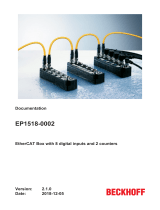 Beckhoff EP1518-0001 Documentation
Beckhoff EP1518-0001 Documentation
-
Beckhoff EP6228 Documentation
-
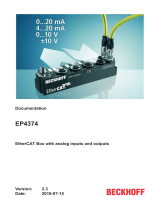 Beckhoff EP4374 Documentation
Beckhoff EP4374 Documentation
-
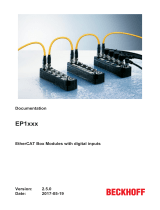 Beckhoff EP1 Series Documentation
Beckhoff EP1 Series Documentation
-
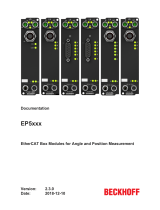 Beckhoff EP5151-0002 Documentation
Beckhoff EP5151-0002 Documentation
-
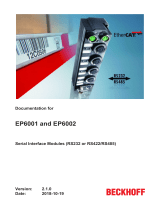 Beckhoff EP6002 Documentation
Beckhoff EP6002 Documentation
-
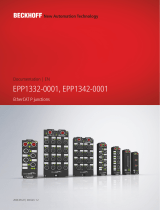 Beckhoff EPP1342-0001 Documentation
Beckhoff EPP1342-0001 Documentation
-
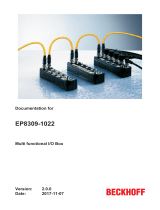 Beckhoff EP8309-1022 Documentation
Beckhoff EP8309-1022 Documentation
-
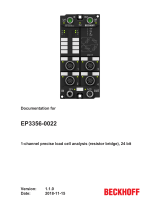 Beckhoff EP3356-0022 Documentation
Beckhoff EP3356-0022 Documentation
-
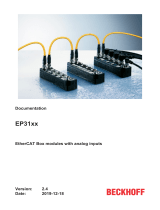 Beckhoff EP3162 Documentation
Beckhoff EP3162 Documentation
Other documents
-
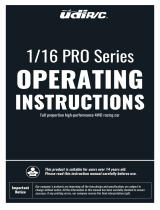 udiR C UD1601 User manual
udiR C UD1601 User manual
-
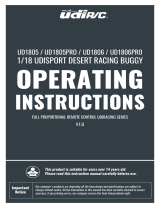 Udirc UD1805 1-18 Udisport Desert Racing Buggy User manual
Udirc UD1805 1-18 Udisport Desert Racing Buggy User manual
-
Brickcom NR-1604 \ Quick Installation Manual
-
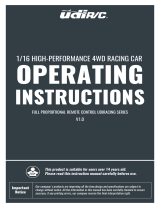 Udirc UD1601 1/16 High Performance 4wd Racing Car User manual
Udirc UD1601 1/16 High Performance 4wd Racing Car User manual
-
 MICRO-EPSILON IF2035 EtherCAT Assembly Instructions
MICRO-EPSILON IF2035 EtherCAT Assembly Instructions
-
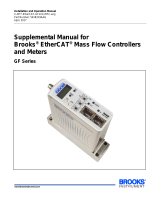 Brooks GF1xx User manual
Brooks GF1xx User manual
-
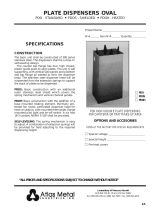 Atlas Metal Industries PDO-11-3/4L Datasheet
Atlas Metal Industries PDO-11-3/4L Datasheet
-
Eurotherm EPackECAT Object Dictionary rev3 Owner's manual
-
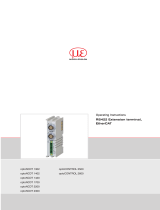 MICRO-EPSILON RS422 Extension terminal, EtherCAT User manual
MICRO-EPSILON RS422 Extension terminal, EtherCAT User manual
-
ADLINK Technology EU Series User manual















































































